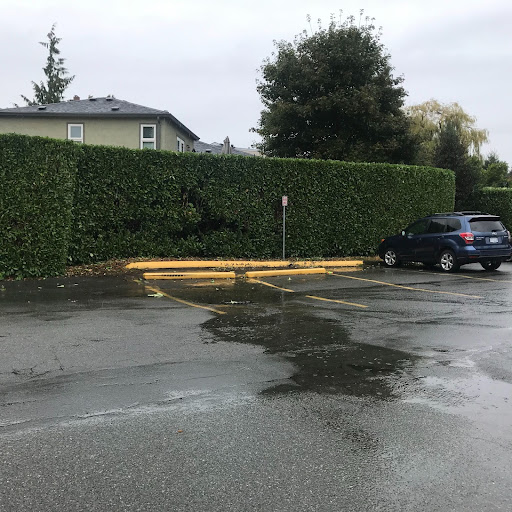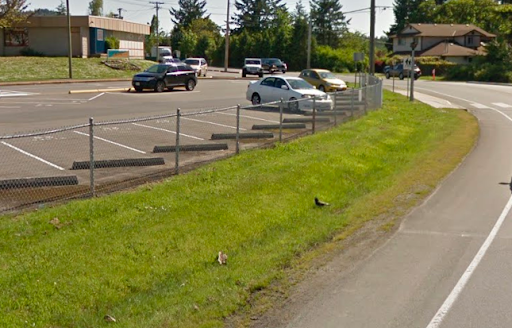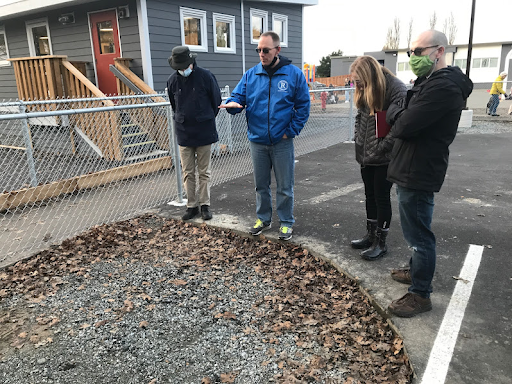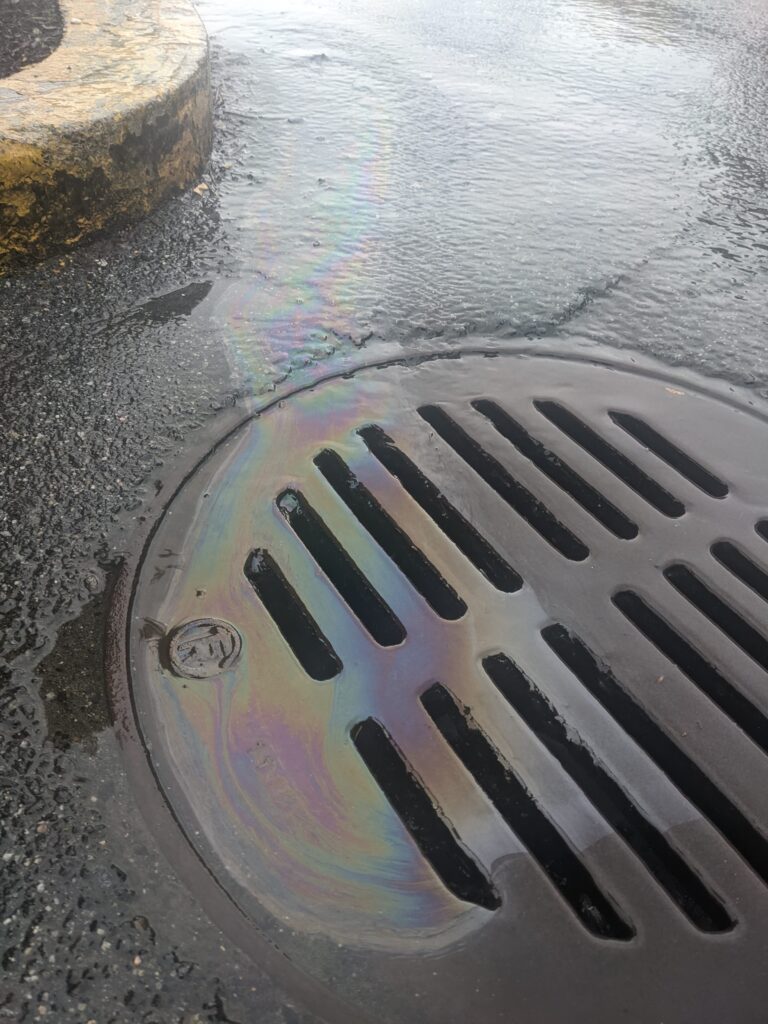Rain gardens are vegetated areas in urban environments, designed to capture, hold, cool, and filter water on the landscape. Rain gardens hold water where it can either evaporate, be transpired by plants (loss of water through leaves, stems, and flowers), or seep deep into the soil and groundwater. These gardens are an example of 'Green Stormwater Infrastructure (GSI)', which are environmentally conscious, adaptable structures that attempt to work with, rather than against, the natural environment in developed areas.
As we witnessed first hand during the 2021 summer heatwave and November floods, extreme weather patterns are increasing in frequency and intensity. This causes destruction and damage to urban and natural environments. To address these impacts, Peninsula Streams Society created the Rain Gardens for Headwaters Program, which takes a scalable grassroots approach to help change how society manages rainwater. Our outreach and education helps community scientists identify opportunities for GSI projects. Once identified, we assist in the planning, design, construction, and maintenance of a rain garden for their community.

Why Rain Gardens Matter in Urban Environments
Urban development uses a lot of impermeable materials to create sidewalks, driveways, rooftops and roads. These structures replace the deep organic soils, plants, wetlands, and streams that absorb and uptake precipitation. When it rains or snows, water runs across hard surfaces like cement collecting pollutants and fine sediments. It then quickly flows through engineered drains and pipe networks that lead directly to our local natural waterways. This devastates stream and coastal ecosystems by eroding banks, washing away and smothering spawning substrates, inputting pollutants, and undermining the establishment of productive invertebrate communities on which fish feed.
Rain gardens provide a much-needed buffer for aquatic ecosystems against these toxic flows by holding water on the landscape, allowing it to slowly release into creeks throughout wet and dry seasons, helping to maintain fish-friendly habitat. Properly designed rain gardens can also filter some of the thousands of chemicals found in storm water, including fertilizers, heavy metals. They even help filter 6PPD quinone, a highly toxic, reactive chemical derived from vehicle tires that is thought to be a significant source of mortality in pre–spawned coho in our urbanized watersheds.
Rain Gardens are becoming a viable solution for urban environments facing climate change and development. Peninsula Streams aims to tap into these benefits, building storm and drought resilient environments through its Rain Gardens for Headwaters Program. Our restoration coordinator Kyle Armstrong says that “Rain Gardens are a low-tech and low-cost form of green infrastructure that essentially work as surrogate wetlands. When built to scale, they can provide a powerful environmental buffer for our local urban streams, waterways, and coastlines and the animals and people that use them.”

Through regionally coordinated and local efforts, the Rain Gardens for Headwaters program aims to take Rain Gardens from obscure to commonplace, increasing resilience to the impacts of impermeable surfaces and storm water runoff. The program's central pillars of stewardship, education, and research combine to create an engaging program in which residents can participate.
We assist communities in developing their storm water management and infrastructure goals while providing them with the tools and knowledge to deliver their own green storm water infrastructure location, design, planning, permitting, fundraising, installation, communication, monitoring, and future upkeep.

How a Rain Garden is Built
There are various types of Rain Gardens that range in technical complexity. Our strategy is to first collaborate with the community to identify areas where parking lot curbs can be cut, allowing water to flow out of the lot and into the garden. Next, an appropriately sized depression in the ground is excavated and partially filled with highly porous soils and wood chips. Plants are carefully selected and planted by communities for the desired conditions and function, and voilà! A Rain Garden has been built!
Sound like a winning combination of local stewardship, climate change adaptation, and maintenance of stream health? Join Peninsula Streams as we embark on this new project. Get involved by signing up on our website! We are looking for maintenance help in the Bowker Creek, Tetayut, and Colquitz watersheds. Or, you can make a financial or in-kind donation to the Rain Gardens for Headwaters Program!
Further resources:
Rain Garden Fact Sheet from USDA (downloadable PDF)
Benefits of Rain Gardens - The Native Plant Herald (article)
Why do we Need Rain Gardens? - MSU Article
Tire Chemicals and Coho Salmon - Washington Stormwater
Peninsula Streams would like to thank the Pacific Salmon Foundation, City of Victoria Strategic Plan Grants, and TD Friends of the Environment for their generous contributions to the Rain Gardens for Headwaters Program.
If you are interested in supporting this work, please consider making a donation to Pen Streams!


This is a much needed answer to urban densification that had obliterated grassy areas that hold back water to support our ecosystems during hot dry spells. Interesting too that some plants help clean the polluted water from roadways running through rain gardens.
I enjoyed the zoom webinar on this topic this evening and will stay tuned to any future projects in my area.
Thank you for providing such a simple and brilliant solution to our urban environment.
I agree with Jane, couldn’t have said it better myself. Definitely much needed